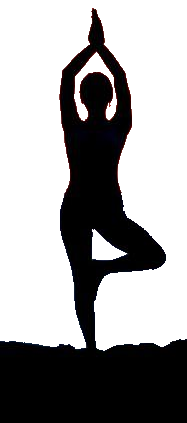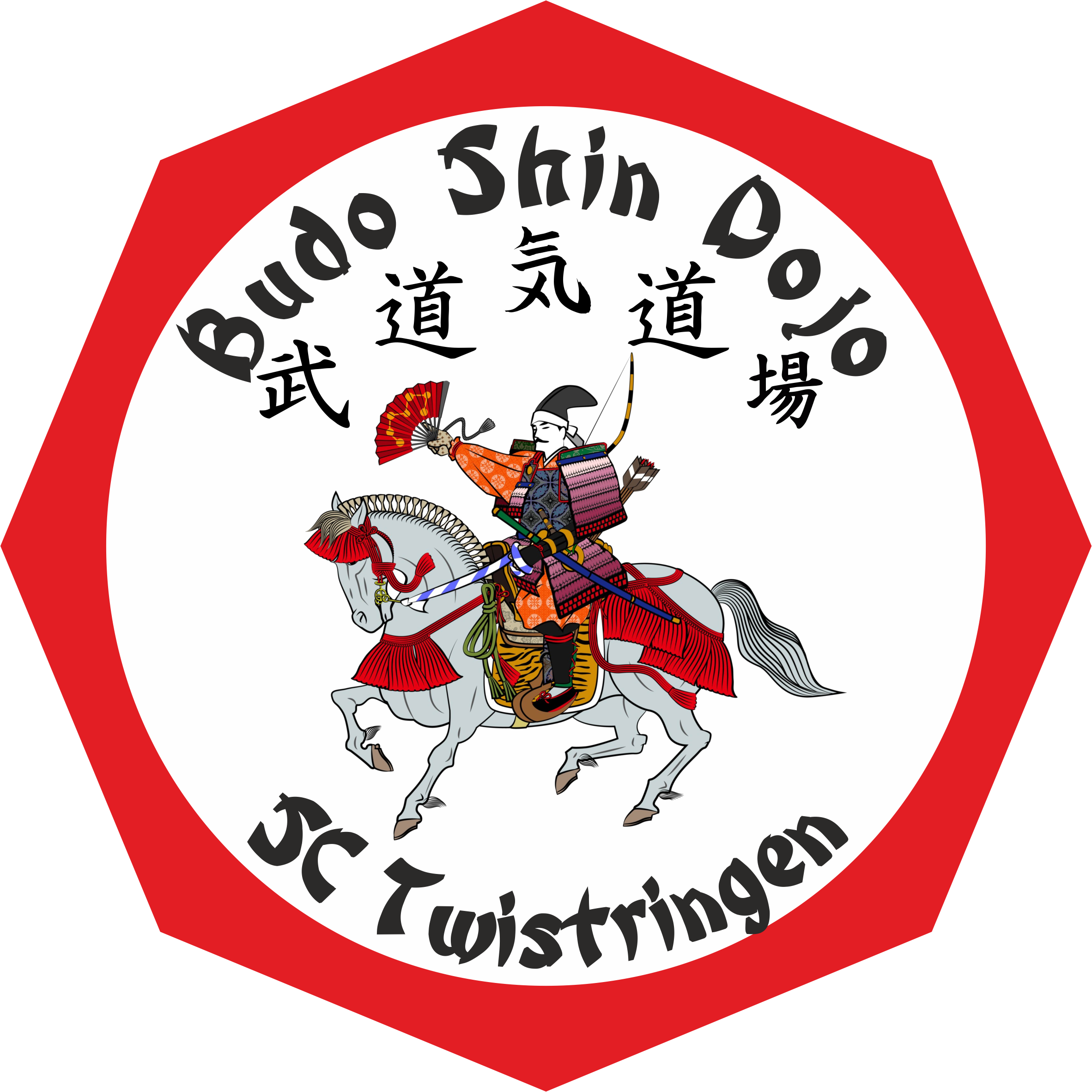Judo (what is judo)
In addition to the well-known martial arts such as karate, Jiu-Jitsu, Tae-kwon-do, Aiki-do, Kung Fu etc., judo belongs to the Asian BUDO sports. The origins of all these sports lie in the Chinese and Japanese tradition. But JUDO has a special position here. While the other BUDO sports (BUDO is the collective term for the "knightly" martial arts of Japanese samurai) still contain moments of aggression, JUDO is just sport. In judo training, throws, levering, choking and holding techniques are mainly taught, in addition to the important “ukemi” (fall school). The "Randori", the practice fight in standing and in the ground, occupies a large area here.
Here the judoka can apply and perfect his techniques. In JUDO-KAMPF, which is conducted according to strict rules, every fighter bears a high degree of responsibility for the health of his partner. In a sporting comparison, the JUDOKA reduces aggression; for him the opponent is only a sporting partner. That is certainly one of the reasons why JUDO became an Olympic sport and is taught in schools in several countries in Germany as part of differentiated physical education. JUDO is a sport that makes all kinds of demands on the human body. In addition to versatile gymnastic movement elements, it demands a high level of physical and mental agility and reaction.
Der DEUTSCHE JUDO BUND zählt ca. 200.000 Mitglieder. So hat diese schöne Sportart eine gute Basis für ihre weitere Zukunft. Dass sie sich in ihrer Qualität nicht nur auf rein sportliche Erfolge beschränkt, sondern stets auch den „PHILOSOPHISCHEN”, den „ERZIEHERISCHEN” Aspekt in den Vordergrund stellt, ist ein Anliegen aller echter JUDOKA. Stellvertretend für diese Seite des JUDO-Sports mag ein japanisches Sprichwort stehen:
"The goal is not important, but the way to get there!"
The history of judo
The origin of judo lies in the Japanese fighting / war and self-defense arts. Jiu-Jitsu plays an essential role here. The craft of war was practiced as a secret science, in various schools old teachers passed their knowledge on to their privileged students. With the Meiji Restoration, the bourgeois revolution in 1868, Japan opened up to western influences. There was a rapid development of industry and science. Associated with this was a spiritualization of the youth and thus their physical neglect. Fears soon arose that the youth, because of their poor physical development, would not be able to cope with the tasks of bourgeois society. The German professor E. Baelz, who teaches at the University of Tokyo, first tried to introduce German gymnastics. When this was not accepted, he encouraged the study of the ancient martial arts, among other things by having the seventy-year-old Japanese Totsuka give a demonstration in Jiu-Jitsu.
Jigoro Kano, born in 1860, student of the political and philosophical faculty, then began to occupy himself with Jiu-Jitsu. Kano studied the art of self-defense with several teachers and soon became a master of his age group. But he was bothered by the harshness of Jiu-Jitsu, which at that time was still preparing for the armed conflict. Since he still regarded elements of Jiu-Jitsu as valuable for the physical and moral education of young people, he founded the Kodokan at the age of 23.
This “school for studying the way” was located in a Buddhist temple at the University of Tokyo and Kano also increasingly used the contents of Zen Buddhism. He removed dangerous and painful techniques such as punches and kicks with arms and legs and limited levering techniques. Kano developed falling exercises, the theory of imbalance (Kuzushi) and improved the attack and defense elements. In the period that followed, the Kodokan's broadcast increased steadily. In 1890, an imperial decree introduced judo, among other things, in Japanese schools. In 1896, Kodokan students competed against members of the "Totsuka Jiu-Jitsu" (school). 13 Kodokan students won 15 fights. Kano starts promoting his sport on trips to Europe. Jiu-Jitsu initially received more attention in Germany, mainly because Japanese fighters traveled to large cities and fought wrestlers and boxers in circuses and variety shows.
In 1906 Erich Rahn founded the first Jiu-Jitsu school in Berlin. However, it was hardly possible to develop the sport on a broad basis; there were only organized teaching activities in the police and in units of the army. World War I stopped the spread of Jiu-Jitsu. The first club was founded in Frankfurt a.M. in 1922. In 1924, the Reichsverband für Jiu-Jitsu was founded, which hosted German championships from 1926. But there was still no uniform form of competition. Judo was only really learned in Germany in 1929, when a London judo team was fighting in German cities. A whole series of associations took over this martial art and joined together in 1932 on the occasion of the 1st International Judo Summer School for German judoring. After the first Japanese Judo Championships had taken place in 1930, the first European Championships were held in Dresden in 1934. den In 1906 Erich Rahn founded the first Jiu-Jitsu school in Berlin. However, it was hardly possible to develop the sport on a broad basis; there were only organized teaching activities in the police and in units of the army. World War I stopped the spread of Jiu-Jitsu. The first club was founded in Frankfurt a.M. in 1922. In 1924, the Reichsverband für Jiu-Jitsu was founded, which hosted German championships from 1926. But there was still no uniform form of competition. Judo was only really learned in Germany in 1929, when a London judo team was fighting in German cities. A whole series of associations took over this martial art and joined together in 1932 on the occasion of the 1st International Judo Summer School for German judoring. After the first Japanese Judo Championships had taken place in 1930, the first European Championships were held in Dresden in 1934.
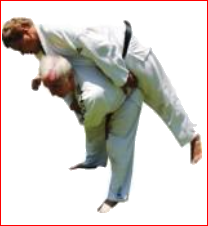
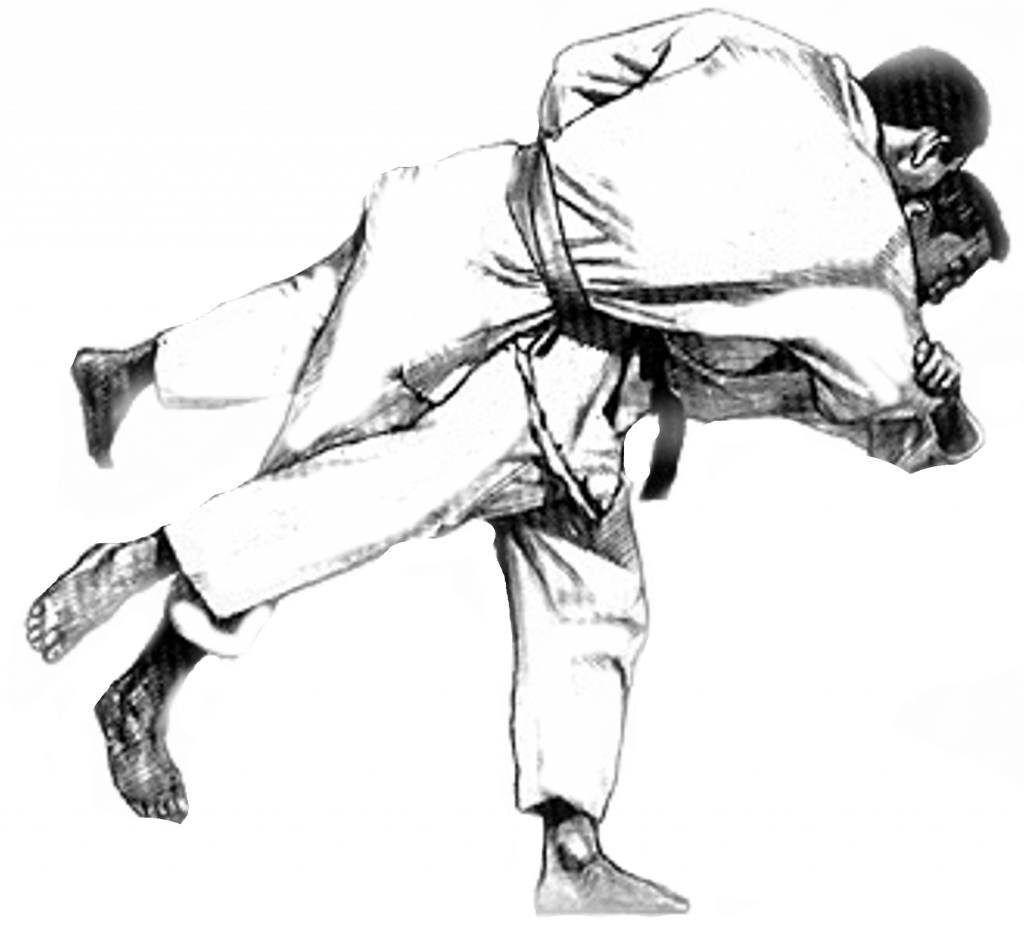
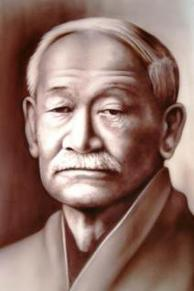
Jigoro Kano
Jiu-Jitsu (What is Jiu-Jitsu)

Jiu-Jitsu is a comprehensive self-defense system originating from Japan, which in earlier times supplemented the usual fighting techniques of the samurai when they did not have a weapon at hand.
Jiu-Jitsu means "yielding art of war", also known as "gentle art". "Jiu" means giving in or evading, "Jitsu" means art or trick. In summary, this means that you use the strength of the opponent to overwhelm him.
In Jiu-Jitsu training, grips and techniques for self-defense such as throws, lever, choke, transport and fixing grips are practiced. In addition, punching and kicking techniques against vital points (weak points) of the human body are taught (“Atemi techniques”). What makes this art so special is the fact that there are no fixed techniques. Jiu-Jitsu is a system and the student chooses the techniques that suit him particularly well. Various elements from countless other martial arts, such as Judo, Karate, Aikido and Taekwondo are available to him and are put together in training to make meaningful defense techniques. For the test for a new belt grade, only the type and number of techniques are specified. B. "5 throws" or "8 defense against knife attacks" is required, then it is up to the examinee which throws or which types of defense combinations he shows in these areas.
Despite its constant development, modern Jiu-Jitsu is deeply rooted in the Japanese tradition. Etiquette, mutual respect and the values of Do ("way" - ethical and moral foundations according to Jigoro Kano) are indispensable components that are transferred from a serious Jiu-Jitsuka to private life. The modern Jiu-Jitsu includes not only the consistent learning of the technique, but also character training and positive personality development and thus also promotes the necessary Self-confidence in an emergency. From the classic Japanese Jiu-Jitsu many new martial arts systems and martial arts such as Judo, Aikido and Karate developed.
The history of jiu-jitsu
Most Budo sports are believed to have originated in connection with the more than 3000 year old Indian art of massage, in which over 100 areas on the human body that are sensitive to pain and life were known. The exact origin and historical origin of Jiu-Jitsu are unknown. Various theses that are not mutually exclusive are mentioned.
The following is worth mentioning: Jiu-Jitsu is apparently in the Came to Japan as part of the cultural exchange through monks and traders. OccupiedBut it is also that the samurai knew unarmed combat systems with which they could defend themselves if they had fallen from their horses or had been disarmed. Since sumo was known in Japan for a long time, it can be assumed that the ring techniques of the warriors in armor, which were called kumiuchi, already included certain grips that later reappeared in Jiu-Jitsu. As early as the 12th century there was a Japanese school for hand-to-hand combat founded by Shinra Saburo. It is not understandable to what extent Chinese techniques have already had an influence here.
The real impulse came from the Chinese Chin-Gen-Pin, who came to Japan in 1659 and there taught three samurai a type of Chinese boxing. These samurai combined these techniques with what they already knew and called it "Jiu-Jitsu", "the yielding war technique. Once Jiu-Jitsu was known, it was taught in many schools that kept their special techniques secret. The various techniques were described in books and scrolls, but these documents remained within the schools and were only ever given to the respective head. During the Tokugawa period there were over 100 schools of jiu-jitsu. This explains the diversity of Jiu-Jitsu.
In 1903 Jiu-Jitsu came to Germany. During a friendship visit by two Japanese cruisers in Kiel, Asian hand-to-hand combat techniques are demonstrated. Kaiser Wilhelm II gives instructions to hire a teacher for these techniques, which are called Jiu-Jitsu. Ono, Higashi, Tani, Uynichi and Mayaki come to Germany and teach Jiu-Jitsu. Jiu-Jitsu has spread around the world. The world center for Jiu-Jitsu, the Nippon Seibukan Academy in Kyoto, Japan, was recognized as a B-member by UNESCO in 1968.
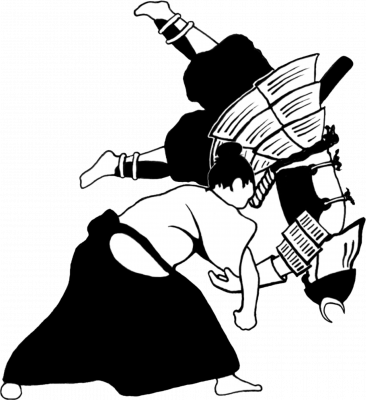

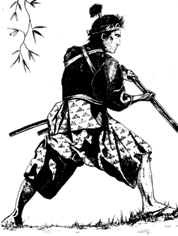
Iaido (Was ist laido)
Mit dem Beginn der Edo-Periode im Jahr 1603 begann nach Jahrzehnten furchtbarer Bürgerkriege in Japan eine Zeit des Friedens und der Stabilität. In dieser Zeit gewann das philosophische und spirituelle Gedankengut des Zen-Buddhismus und Taoismus zunehmend an Einfluss auf die japanische Kriegerklasse, die Samurai.
Der Samurai Hayashizaki Jinsuke Shigenobu (ca. 1546-1621) lehrte in seiner Schule Iai-Jutsu: das schnelle Ziehen des Schwertes und Kontern auf einen unerwarteten Angriff. Mit dem Einfluss des Zen-Buddhismus wurden, neben der Beherrschung der Schwerttechniken, die Schulung des Geistes, die Konzentration, die Charakterschulung, die Überwindung des Ego und damit die Einheit von Geist, Schwert und Körper (ki ken tai ichi) immer wichtiger. Das Ziel des Kampfes mehr und mehr darin, den Kampf zu beenden, ohne das Schwert überhaupt ziehen zu müssen. Der Legende nach soll sich Hayashizaki Jinsuke Shigenobu die Natur des Schwertkampfes während einer Meditation eröffnet haben. Auf seinen Iai-Stil, Hayashizaki-Ryu, berufen sich viele nachfolgenden Stilrichtungen, so auch die heute am weitesten verbreiteten Stile: Muso Shinden Ryu und Muso Jikiden Eishin Ryu.
Mit der Meiji-Periode im 19. Jahrhundert wurde das Tragen von Schwertern in Japan verboten. Damit kam die Entwicklung und Ausübung der Schwertpraktiken fast vollständig zum erliegen und viele Iai-Stile gerieten in Vergessenheit. Es war Nakayama Hakudo (1869-1958), der in den 20er Jahren des 20. Jahrhunderts Iaido wieder der Öffentlichkeit zugänglich machte. 1932 tauchte erstmals der Name Iaido als Bezeichnung für die Schwertkunst auf.
Iaido wird in Form von Kata geübt: genau festgelegte Abfolgen von Schwerttechniken. Dabei bestehen alle Iai-Kata aus vier Elementen: Das schnelle, aber nicht überhastete Ziehen des Schwertes, das unmittelbar – entsprechend der Situation- zu einer Schneide-, Block-, oder Ausweichtechnik weitergeführt wird (nukitsuke). Die nun folgenden Schnitte (kiritsuke) sollen den oder die Angreifer töten. Es werden nicht mehr Bewegungen ausgeführt, als unbedingt notwendig. Dann wird die Klinge vom Blut gereinigt (chiburi) und das Schwert in die Scheide zurück geführt (noto). Die ganze Kata dauert dabei meist nur wenige Sekunden.
Weitere Informationen zu Iaido könnt Ihr hier entnehmen: Norddeutscher Iaido Bund
DIE KATA DES ZNKR-IAIDO:
Als Seitei-Iaido werden zwölf Kata bezeichnet, von denen sieben 1968 von Iai-Meistern aus verschiedenen Stilrichtungen zusammengestellt wurden. 1980 hat man nochmals drei Kata hinzugefügt und im Jahr 2000 kamen zwei weitere Kata dazu. Diese zwölf Kata gelten als Seitei-Iai (Standart-Iai) des Zen Nihon Kendo Renmei (alljapanischer Kendo Verband) bzw. der International Kendo Federation (IKF) und werden heute als Zen Nihon Kendo Renmei Iaido (ZNKR-Iaido) oder Zen Ken Ren Iaido bezeichnet. ZNKR-Iaido wird von vielen Iaidoka verschiedener Stilrichtungen als Basis und Grundschule benutzt und vor allem auch bei Wettkämpfen und Prüfungen gezeigt. Die Bewegungsabläufe wurden vom ZNKR genau beschrieben (und werden von Zeit zu Zeit etwas verändert).
DIE KATA DES ZNKR-IAIDO:
ippon me (1. Form) mae (vorn)
nihon me (2. Form) ushiro (hinten)
sanbon me (3. Form) ukenagashi (empfangen und abgleiten lassen)
yohon me (4. Form) tsuka ate (Stoss mit dem Griff)
gohon me (5. Form) kesa giri (Schnitt entlang der Kesa)
roppon me (6. Form) morote tsuki (Stich mit beiden Händen)
nanahon me (7. Form) sanpogiri (Schnitt in drei Richtungen)
happon me (8. Form) ganmen ate (Stoss ins Gesicht)
kyuhon me (9. Form) soete tsuki (Stich in den Magen)
jupon me (10. Form) shiho giri (Schnitt in vier Richtungen)
juichippon me (11. Form) sogiri (verfolgendes Schneiden)
junippon me (12. Form) nukiuchi (ziehen und schneiden)
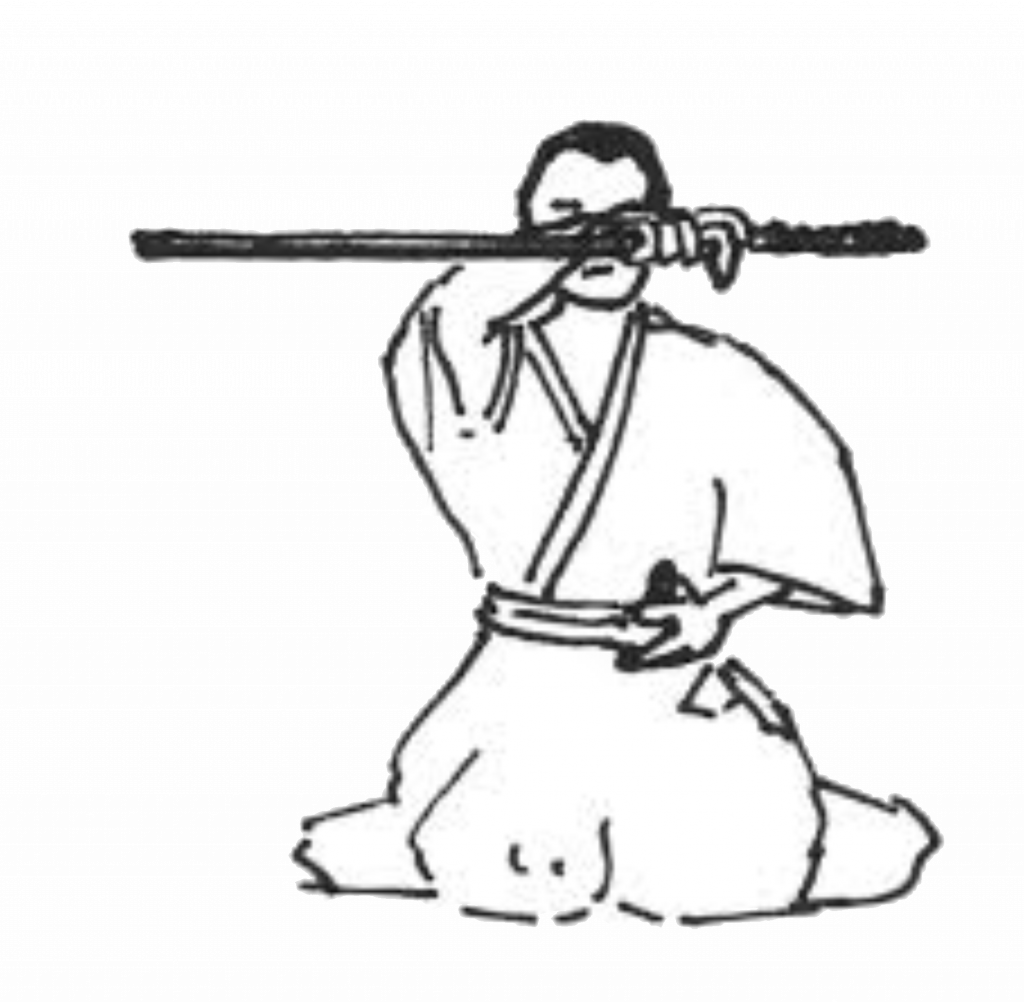
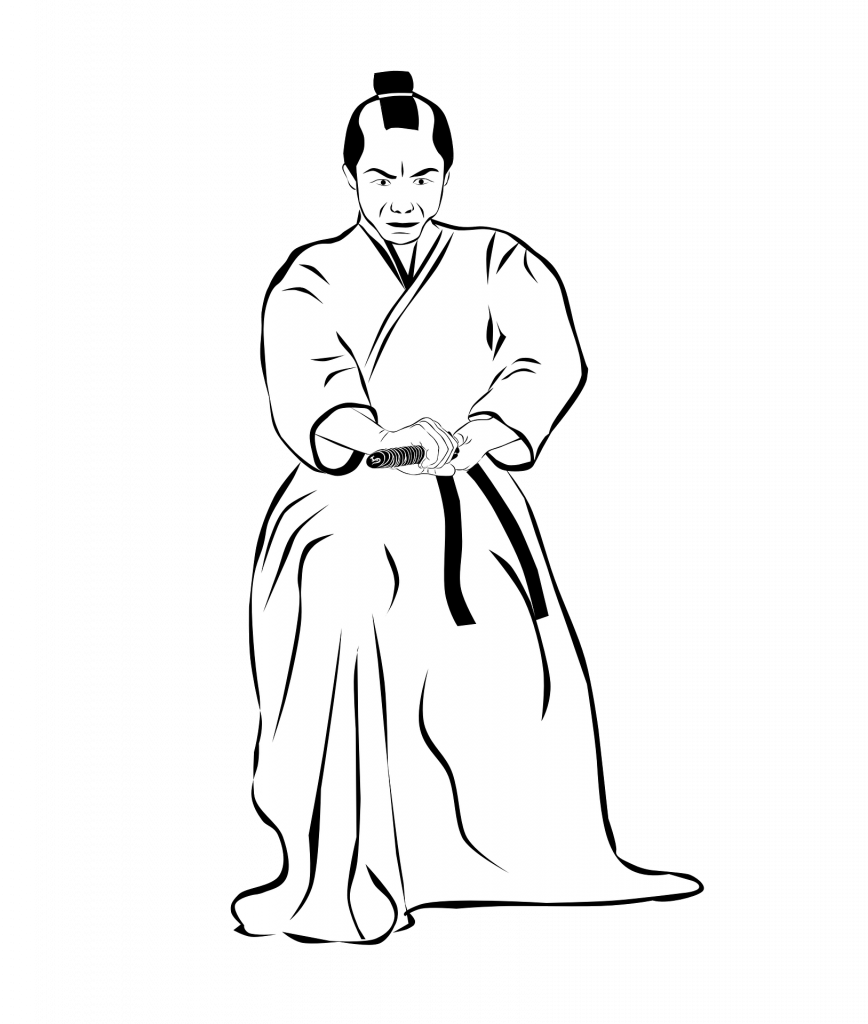
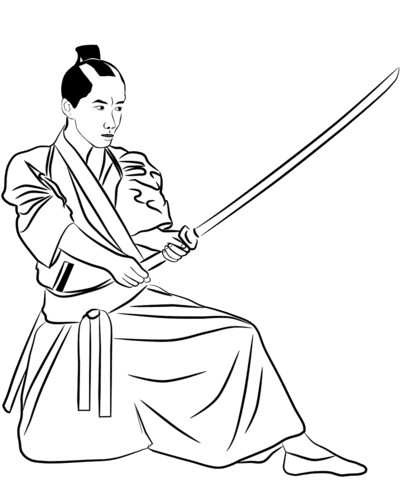
Kenjutsu, the teaching of swordsmanship
Handling the sword of the Japanese warriors (katana and wakizashi)
The two styles offered here are some of the oldest Japanese sword martial arts. You were already in the 14th and 15th Founded in the 19th century and with their Kata’s (fixed forms of training) have survived the last centuries almost unchanged.
At the beginning there is training with the wooden sword in individual and partner exercises:
Kenjutsu is not a competitive sport. The forms of movement practiced here with the katana (sword) and the bokken (wooden sword) train concentration, coordination and motor skills and increase your own body awareness considerably.
Men and women can train Kenjutsu well into old age, there is no special requirement except the interest and the leisure to learn an ancient Budo art
Foto unter Videos / Fotos
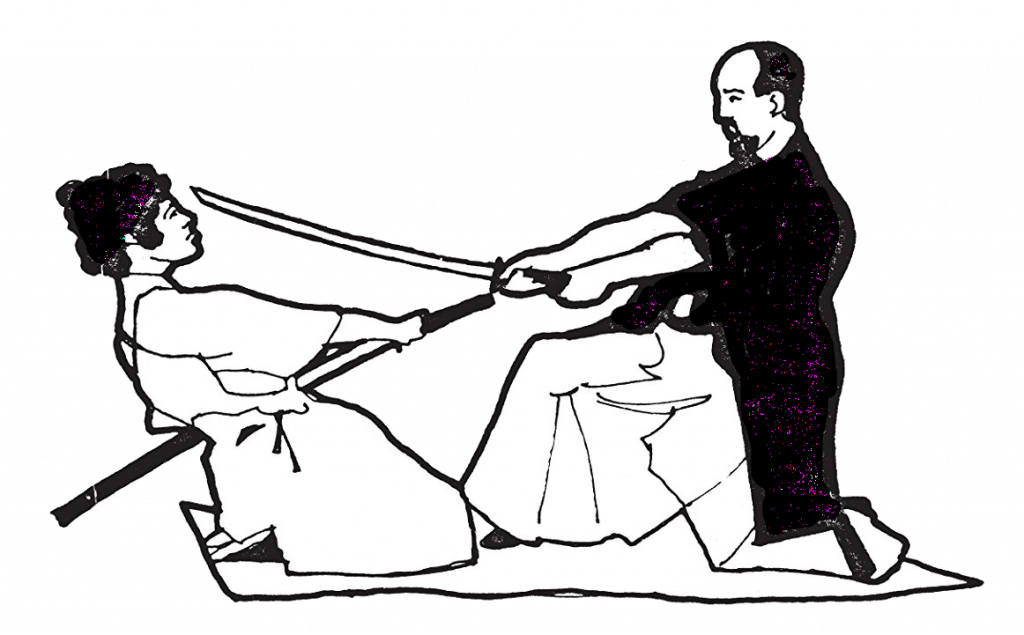

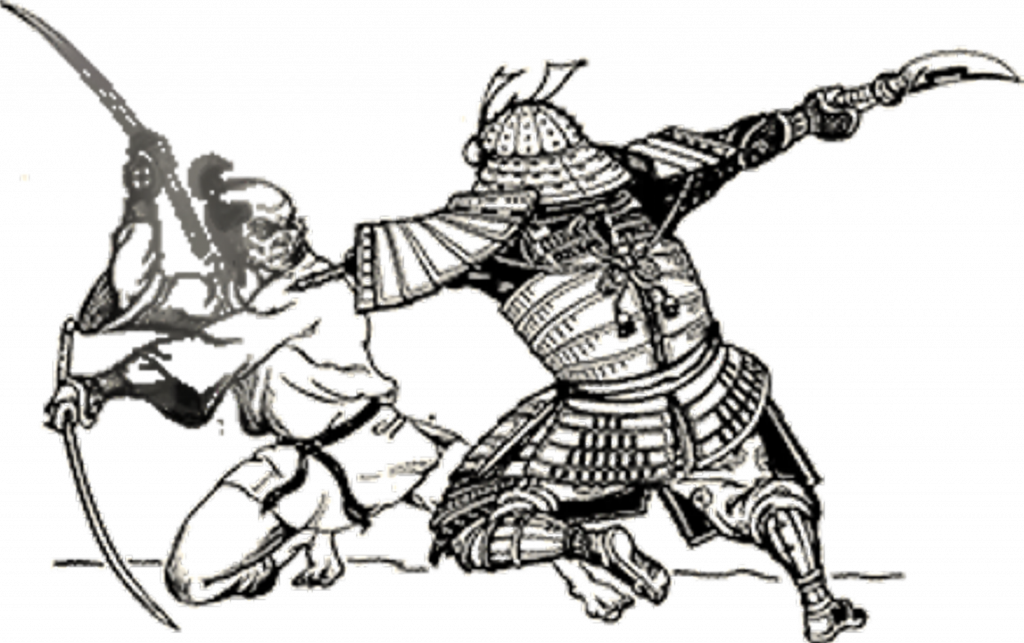
Was benötigen Anfänger:
Jogginghose, T-Shirt, Badelatschen, später ein Anzug (Gi).
Ein Holzschwert (Bokken) und ein Gürtel (Obi) werden vom Verein zum Training für Anfänger gestellt!
Yamabushi-Ryu Kyûjutsu
The art of shooting with the Japanese longbow is, in terms of its technical understanding, completely different from the use of bows from other cultures. The main difference lies in the way in which the arrow is placed. We are used to the fact that the arrow placed on the string is placed on the left side of the bow. This gives the shooter a clear view of the target. In the Japanese longbow, the arrow is placed on the right side of the bow wood. If the target is now aimed in the usual way, it will be completely covered by the bow.
The fact alone requires a significantly different shooting technique than what we are used to. The following explanations attempt to explain this technique in a comprehensible manner. At this point, however, it should be noted that a deeper understanding of handling and shooting technique can only be brought close to those who have already familiarized themselves with the ancient arts of war. The basics, doctrines and theses as well as the inner attitude to Budo and Bushido are just as elementary for mastering the longbow as the art of wielding the sword.
What is thus being taught relates exclusively to the ancient martial art of kyûjutsu. A comparison with the more generally known Kyûdo cannot be made. The reason for this is that in Kyûdo the spiritual, mental path is in the foreground. The perfect execution and execution of the given etiquette has a much higher priority in the Kyûdo than the meeting of the goal. Kyûjutsu, on the other hand, is applied archery suitable for everyday use in its original form. The requirement of kyûjutsu is to meet a goal under all conceivable circumstances.
Although the paths of both styles are diametrically opposed, there are points of contact in certain areas. The connoisseur of both styles are aware of points of contact; these will be revealed to the seeker at times.
In addition to the use of the Japanese longbow as a pure ranged weapon, the kyûjutsu also includes aspects of kenjutsu, especially ryokujutsu, and integrates them seamlessly. If the distance of the longbow is overcome, it can also be used for self-defense at short range.
In addition, the wakizashi is traditionally worn with the Japanese longbow. This is a sword with a blade length of about 60 cm. Wakizashi means something like “faithful companion”. The wakizashi is used for close range combat.
Everyone is warmly welcome to trial appointments if they are 14 years of age or older. With the exception of appropriate training clothing, all necessary equipment is provided by the club.
Weitere Info oder Trainingszeiten unter: www.jitsu.de oder Telefon 04243 602200.
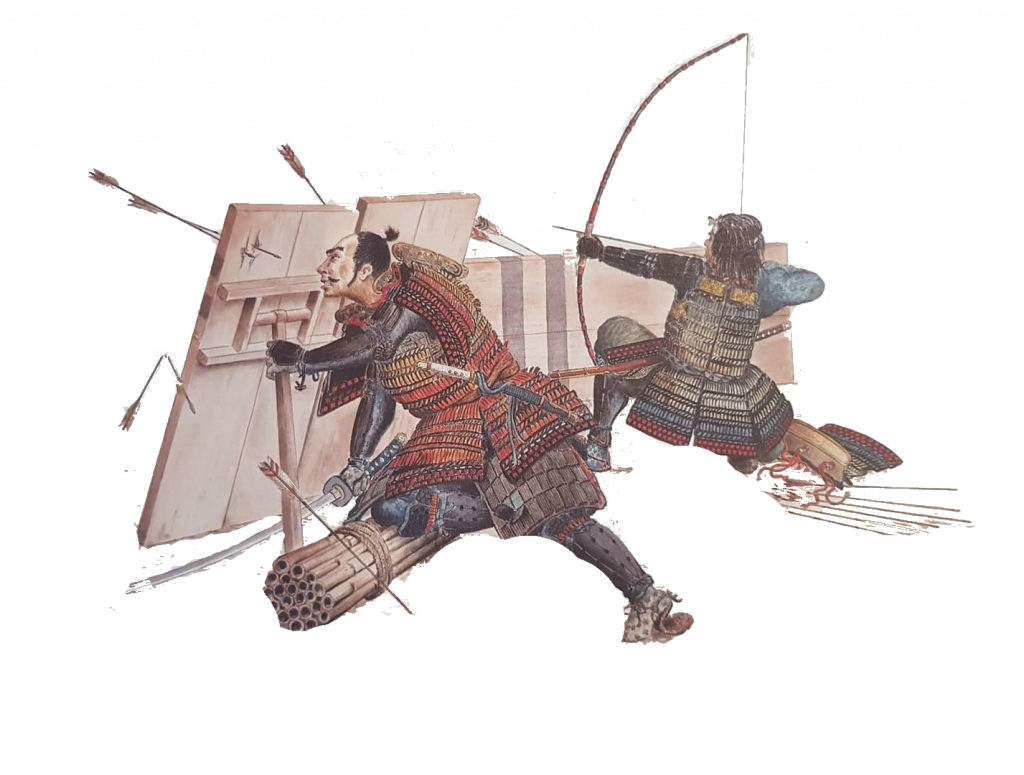
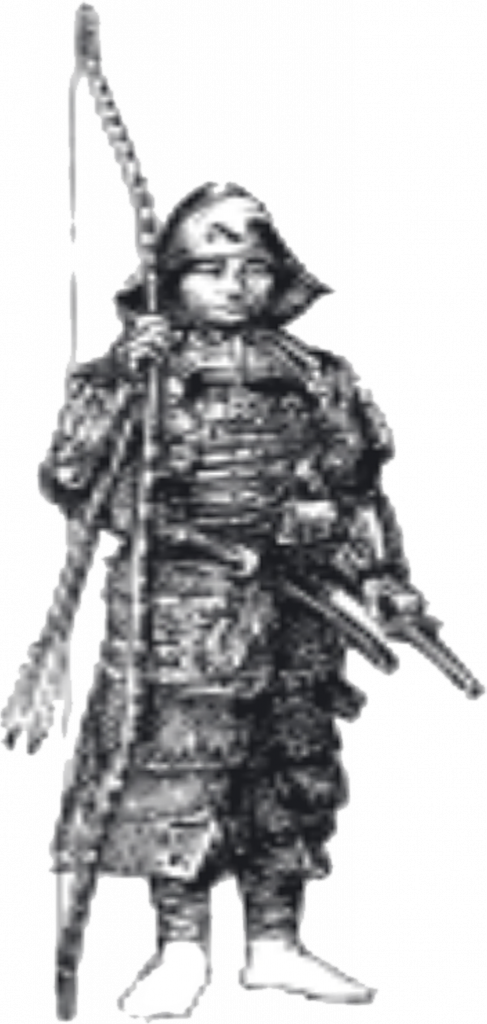
Über Kyûjutsu
Kyûjutsu
Kyûjutsu (弓術) ist die traditionelle japanische Kampfkunst, die von der Samurai-Klasse des feudalen Japans praktiziert wird. Obwohl die Samurai vielleicht am besten für ihre Schwerter bekannt sind, galt Kyûjutsu eigentlich als eine wichtigere Fähigkeit für einen bedeutenden Teil der japanischen Geschichte. Während der mehrheitsmäßigen Kamakura-Zeit während der Muromachi-Periode (ca.1185–um 1568) war der Bogen fast ausschließlich das Symbol des professionellen Kriegers.
The beginning of archery in Japan is, as elsewhere, pre-historical. The first images picturing the distinct Japanese asymmetrical longbow are from the Yayoi period (ca. 500 BC–300 AD). The first written document describing Japanese archery is the Chinese chronicle Weishu (dated around 297 AD), which tells how in the Japanese isles people use “a wooden bow that is short from the bottom and long from the top Weishu (datiert um 297 n. Chr.), die erzählt, wie auf den japanischen Inseln „Menschen “einen hölzernen Bogen verwenden, der unten kurz und oben lang ist.
The changing of society and the military class (samurai) taking power at the end of the first millennium created a requirement for education in archery. This led to the birth of the first kyujutsu ryūha (style), the Henmi-ryū, founded by Henmi Kiyomitsu in the 12th century. The Takeda-ryū and the mounted archery school Ogasawara-ryū were later founded by his descendants. The need for archers grew dramatically during the Genpei War (1180–1185) and as a result the founder of the Ogasawara-ryū (Ogasawara Nagakiyo), began teaching yabusame (mounted archery). Kyûjutsu
-Ryha (Stil), der Henmi-Rya, die von Henmi Kiyomitsu im 12. Jahrhundert gegründet wurde. Die Takeda-Rya und die berittene Bogenschießschule Ogasawara-Rya wurden später von seinen Nachkommen gegründet. Während des Genpei-Krieges (1180–1185) wuchs der Bedarf an Bogenschützen dramatisch an, und als Folge davon begann der Gründer des Ogasawara-Rya (Ogasawara Nagakiyo) Yabusame (eine traditionelle Form des japanischen Bogenschießens, die vom Pferd aus ausgeübt wird) zu unterrichten.
From the 15th to the 16th century, Japan was ravaged by civil war. In the latter part of the 15th century Heiki Danjō Masatsugu revolutionized archery with his new and accurate approach called hi, kan, chū (fly, pierce, center), and his footman’s archery spread rapidly. Many new schools were formed, some of which, such as Heki-ryū Chikurin-ha, Heki-ryū Sekka-ha and Heki-ryū Insai-ha, remain today. hi, kan, ch (Fliege, Pierce, Mitte) und das Bogenschießen seines Fußmanns breitete sich schnell aus. Viele neue Schulen wurden gegründet, von denen einige, wie Heki-Rya Chikurin-ha, Heki-rya Sekka-ha und Heki-rya Insai-ha, bis heute erhalten sind.
The Yumi as a weapon of war began its decline after the Portuguese arrived in Japan in 1543 bringing firearms with them in the form of the matchlock. The Japanese soon started to manufacture their own version of the matchlock called tanegashima and eventually the tanegashima and the yari (spear) became the weapons of choice. The yumi, however, would be continued to be used alongside the tanegashima for a period of time because of its longer reach, accuracy, and especially because it had a rate of fire 30–40 times faster. The tanegashima however did not require the same amount of training as a yumi, allowing Oda Nobunaga’s army consisting mainly of farmers armed with tanegashima to annihilate a traditional samurai cavalry in a single battle in 1575.
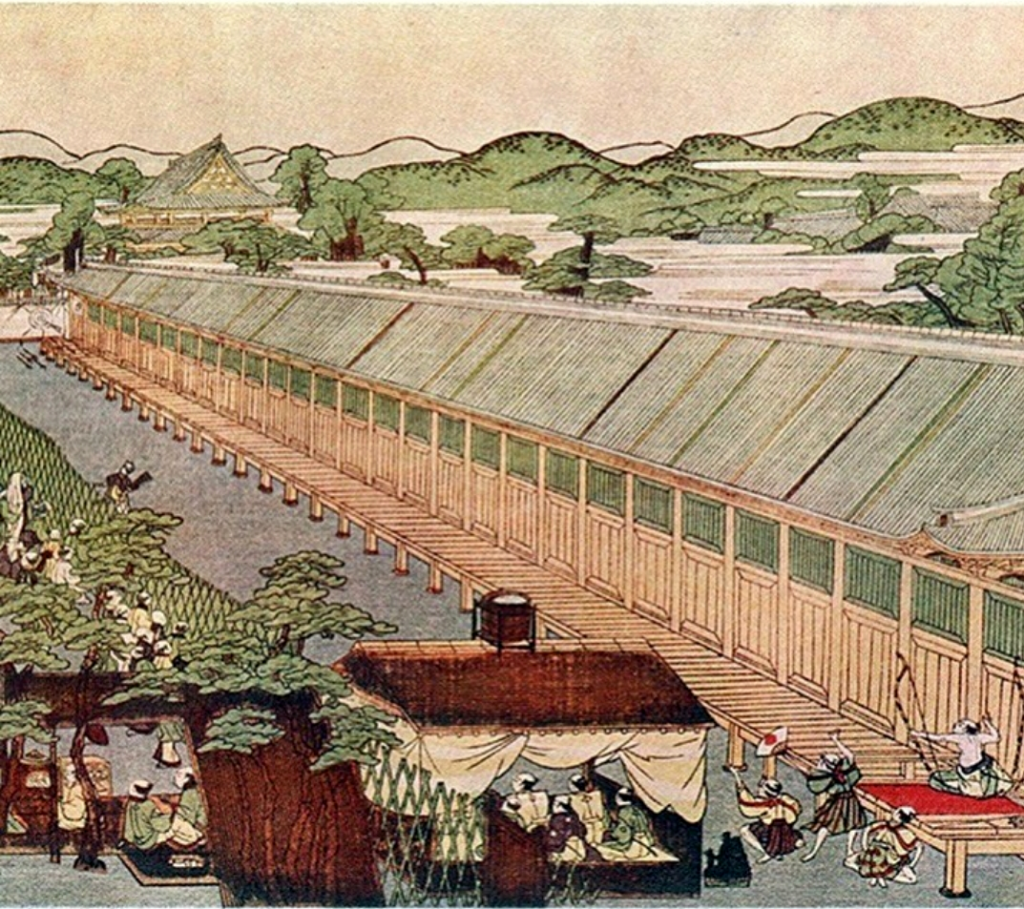
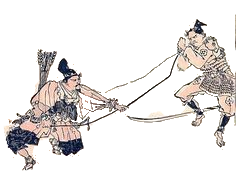
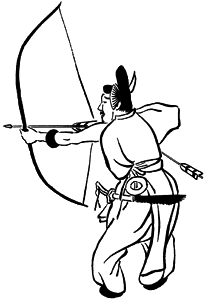
Kobudo
Kobudo (the weapons of the peasants)
In earlier times, no "empty hand" system could survive without the additional use of weapons (Bukihō). The samurai used warrior weapons in bujutsu, the people converted everyday utensils into weapons and thus founded the systems of kobujutsu
Die Samurai verwendeten im Bujutsu Kriegerwaffen, das Volk funktionierte alltägliche Gebrauchsgegenstände in Waffe um und gründete damit die Systeme des Kobujutsu.
Bis zur Versportlichung der Systeme in Japan und der Veränderung des Bujutsu im Budō, war eine Trennung der beiden nicht denkbar. Weder in den japanischen Kampfsystemen noch in den okinawanischen Kampfsystemen konnte man auf den zusätzlichen Gebrauch von Waffen verzichten. Auch heute sind sie notwendige Hilfen in der Selbstverteidigung und werden im automatisch in das waffenlose Training integriert.
Was ist Ryukyu Kobudo Fukyukai Kobujutsu / Kobudō?
Kobujutsu is a special weapon method (Bukihō) that teaches the use of folk weapons in Japan as well as on Okinawa. Later, the modern term "Kobudō" was derived from it, which was intended to transform the martial methods of Kobujutsu into peaceful methods of practice.
Kobujutsu 古武術 - "Old Bujutsu" (古武術) is the name for the popular weapon systems of the lower-ranking population from Japan (Kobujutsu (Japan)) and Okinawa (Kobujutsu (Okinawa)). Kobujutsu is a vague distinction from the Japanese art of war (bujutsu) of the professional warriors (bushi). The weapons (buki) and systems (ryū) of kobujutsu were developed both in Japan and on Okinawa mostly from the everyday tools of the people. In the Okinawan art of war, kobujutsu was always closely linked. Each unarmed system was complemented by various weapon systems. 古武術 – „Altes Bujutsu“ (古武術)
Ist die Bezeichnung für die volkstümlichen Waffensysteme der rangniederen
Bevölkerung aus Japan (Kobujutsu (Japan)) und Okinawa (Kobujutsu (Okinawa)). Kobujutsu ist eine vage Abgrenzung zur japanischen Kriegskunst (Bujutsu) der professionellen Krieger (Bushi). Die Waffen (Buki) und Systeme (Ryū) des Kobujutsu wurden sowohl in Japan als auch auf Okinawa meist aus den alltäglichen Arbeitsgeräten des Volkes entwickelt.
In der okinawanische Kriegskunst war Kobujutsu immer eng miteinander verbunden.
Jedes unbewaffnete System wurde durch verschiedene Waffensysteme ergänzt.
Kobudō 古武道 – „Altes Budō“, ist ein Folgekonzept des Kobujutsu und steht analog zur Veränderung des Bujutsuzum Budō. Dabei wurde die Silbe Jjutsu (Technik) durch dō ersetzt, was darauf hinweisen soll, dass es sich dabei um eine Wegkunst handelt. Der Gedanke ist gut, die Umsetzung nicht. Durch die Versportlichung der Systeme wurde die Kobudō Kata zu einer virtuosen Demo-Show und verlor ihre Bedeutung als Speicher von verschlüsselten Sinninhalten.
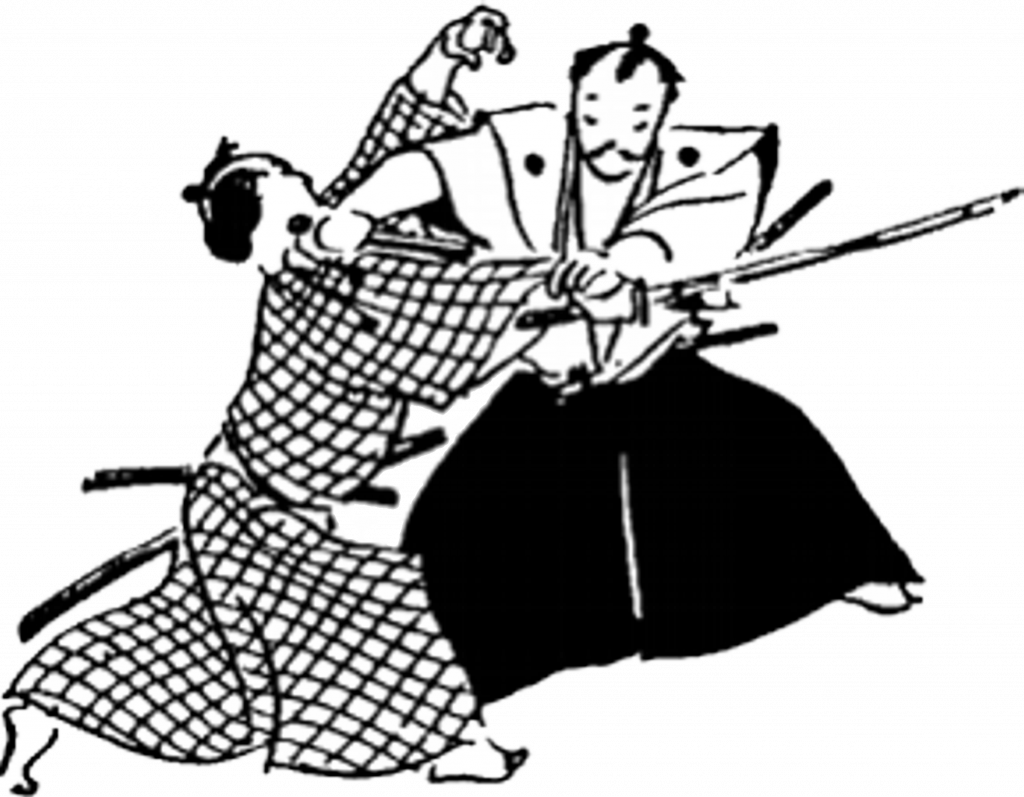
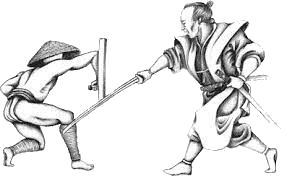
Kundalini Yoga
Im Westen ist diese Form des Kundalini-Yoga sehr verbreitet, die im Gegensatz zum Hatha-Yoga den Fokus mehr auf dynamische Bewegungsabläufe der Meditation und Mantras legt. Deshalb treffen sich nun regelmäßig einige Yoga Interessierte montags abends in der „Sporthalle Hildegard-von-Bingen Gymnasium“ in der Zeit von 17.45 bis 19.15 Uhr.
Kundalini Yoga helps to master the daily demands energetically, calmly and calmly. The goal is the harmonization of body, mind and soul through posture, movement, concentration, relaxation and conscious breathing. Typical for Kundalini Yoga are dynamic or flowing sequences of exercises in addition to calm holding exercises and varied mantra meditations. The life energy is brought to flow, which leads to more vigor and alertness in everyday life.
“The body doesn't stretch itself. In order to maintain flexibility, it is necessary to stretch it. "
In a group of practitioners who immerse themselves in the experience of yoga and gain strength for everyday life, the focus is on achieving the above-mentioned goals.

Hatha Yoga
ist der wohl bekannteste Teil des Yeutet Sonne und “Tha” bedeutet Mond.
Hatha is a form of yoga in which the balance between body and mind is sought primarily through physical exercises (asanas), breathing exercises (pranayama) and deep relaxation (savasana). Hatha Yoga also offers advice on how to lead a healthy life.
For most people, hatha yoga is the first step into yoga. The term Hatha Yoga was used in Hatha Yoga Pradipika, a yoga script from the 15th century. There it was used to differentiate spiritual yoga (Raja yoga, one of the four yoga paths) from more physical yoga (Hatha yoga).
Hatha Yoga is referred to here as a step on the way to Raja Yoga. That is, the physical (Hatha Yoga) brings us to bring our mind under control in order to experience the depth of meditation. The goal of Hatha Yoga is to achieve absolute control of the mind. It is also interpreted as an expression of the unity of opposing energies (hot and cold, male and female, positive and negative, sun and moon).
Through the various asanas (body postures) we make our body flexible and flexible. Through pranayama (breathing exercises) we cleanse our body of various pollutants. Through deep relaxation (Savasana) as well as through meditation, we learn to let go and let body and mind come to rest completely.
Hatha Yoga is a holistic philosophy of life.
